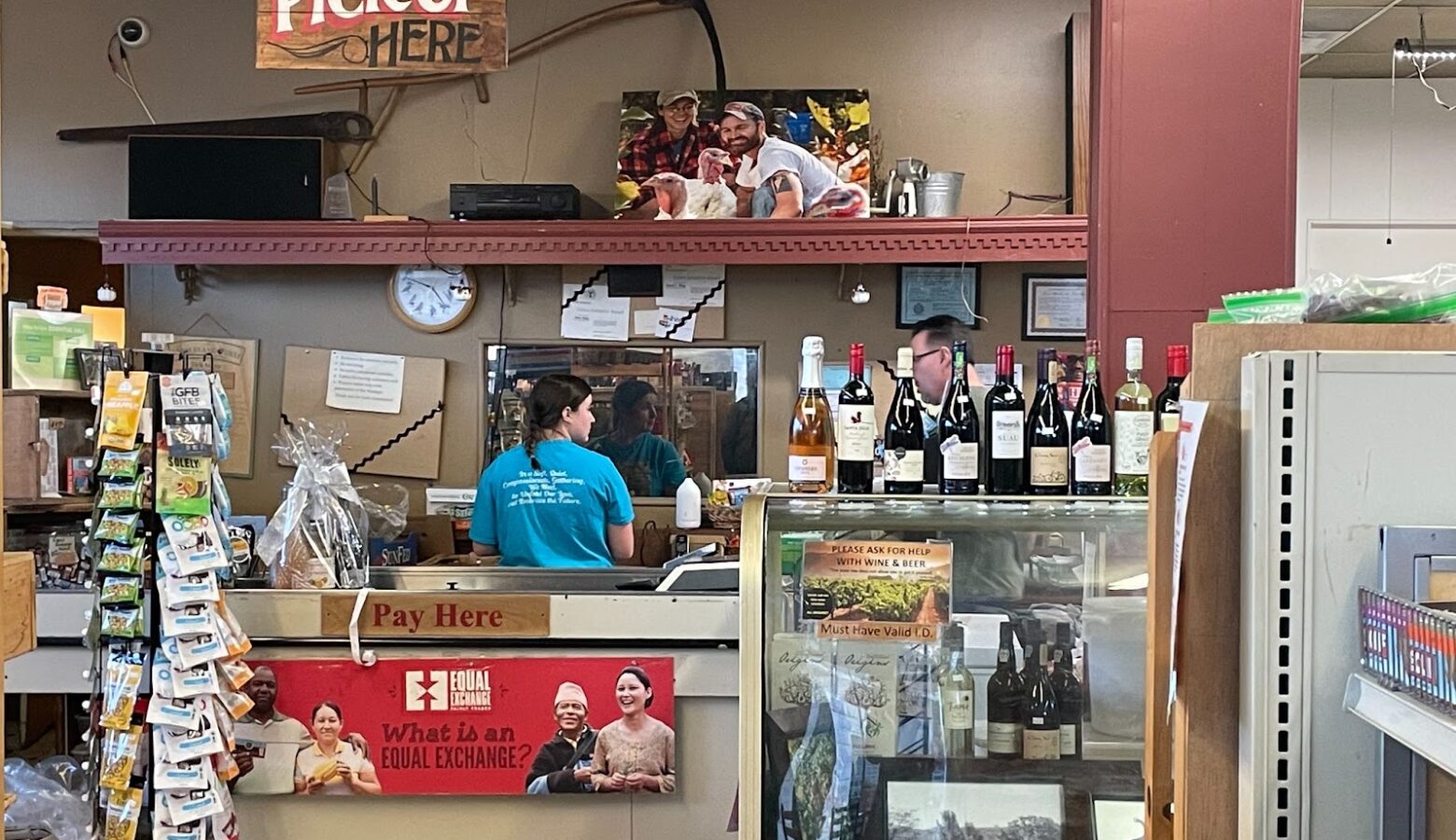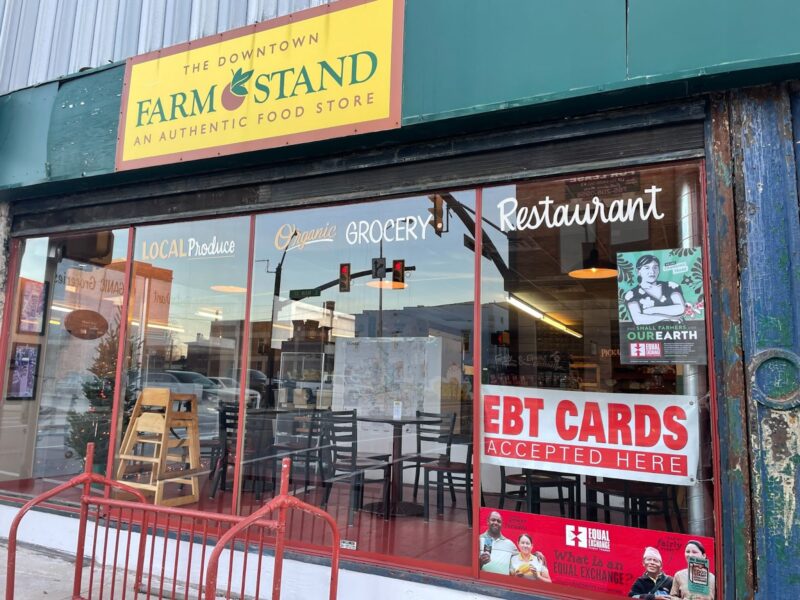Fending for food in a food desert

When Brian Carless’ neighbors leave their Thomas Park/Avondale neighborhood houses to go grocery shopping, they don’t go to Payless or Walmart. Instead, they turn to the gas station on the corner of Memorial Drive and 11th Street, where they purchase processed foods with little nutritional value.
“While it may not be the healthiest kind of food that folks are accessing with that money, the gas station over here is where most of my neighbors shop,” Carless said. “That’s their grocery store — chicken nuggets, french fries — that’s what folks are buying.”
Carless’ neighbors are not choosing not to shop for healthy, nutritious foods at grocery stores. Rather, they find themselves stuck in a situation with few other options.
“People don’t have transportation to get downtown,” Carless said, “or the time to ride the bus downtown then ride all the way back home — that’s a two hour bus ride. If we created something around here where folks can shop, that would be a dream.”
The U.S. Department of Agriculture’s (USDA) Economic Research Service found areas of Muncie to have relatively high numbers of low-income households (12.2%) without vehicles that are more than 0.5 miles away from supermarkets.
While driving down McGalliard Road in either direction, there’s Payless, Meijer, Walmart, Target and Fresh Thyme. The possibilities for grocery shopping are seemingly endless — unless you live in one of Muncie’s food deserts.
“The whole definition of food deserts is that you don’t have access to fresh food, and the food that you do have access to is typically more highly priced,” said Melinda Messineo, Ball State professor of sociology.
Nonprofit organization Feeding America performs yearly studies called “Mapping the Meal Gap,” in which they analyze and record data from across the country in different food deserts in state counties. The organization’s 2020-2021 report found in 2019, 15.7% of Delaware County lived in food insecurity, accounting for more than 18,000 people.
Many of these people, Messineo said, are likely known as ALICE — asset limited, income constrained and employed — which United for Alice explains is a new way of defining and understanding the struggles of households above the Federal Poverty Level, but still hurting to afford the minimum.
“Whatever we’re going to create, it has to, at this point, still work within the confines of SNAP benefits,” Carless said. “Maybe other communities are similar [to Muncie], but there’s a high rate of folks who are living in poverty, and [SNAP benefits] are really the main thing they use for food.”
Feeding America also stated 20.2% of Delaware County children lived in food insecurity, and nearly 98% of Muncie Community Schools’ students are eligible for free meals. The average cost of a meal in Delaware County is $2.68, yet an additional $8,238,000 is required to meet the county’s food needs.
While some food pantries have attempted to fill in the gaps of Muncie’s food deserts, Messineo said getting people access to food and food resources still remains a struggle in Muncie, and “the need has never been higher.”
Access to healthy food in the stores available is scarce, as fresh produce, deli meats and other healthy options often aren’t sold, leading to the creation of specific palettes for people in food insecurity as they start to crave salty and sugary foods. (This is a bit of a run-on sentence…. I’d split it up and make it clearer… what does it really mean?) Messineo said selling fresh produce has become increasingly difficult as a result of the development of a distaste for healthier options, which sets long-term, less-than-helpful choices in these communities.
One solution to the issue of Muncie’s food insecurity exists on the corner of Mulberry and Main.
Dave Ring, Muncie resident and owner of Downtown Farm Stand and his wife, Sara Ring, started planning their store in 2007 and moved into their 125 E. Main St. location in 2009 after farming organically full-time from 1999 to 2007.

Located on the corner of Mulberry and Main, Downtown Farm Stand is one of the only grocery stores in Muncie’s downtown area. Dave Ring, owner and Muncie local, said it was important to choose a location central to the downtown area in order to provide food to those living nearby.
(Photo: Taylor Smith)
“The first idea came when our farm and other farmers we sold with at farmer’s markets weren’t able to sell all of our products,” said Dave Ring. “We felt shut out of area corporate stores. We thought, ‘What if there was al store where we could sell our products and know that they were going to be sold?’”
Ring says he is concerned that Muncie has 12.2% of residents living in low-income households. But he and his wife are doing what they can to provide an option for food in one of Muncie’s food-insecure areas, offering a large variety of food from local farmers, including fruits and vegetables, deli meats, honey and eggs.
The location on Main was inexpensive, but the main reason they chose the place, Ring said, was because they knew it was located in a food desert. Downtown Farm Stand became the only grocery store in Muncie’s downtown area, with the second closest another half mile away — Village Pantry.
“[The food insecurity] issue was just starting to come to light in the early 2000s,” Ring said. “There was a documentary called ‘King Corn’ that talked about how everything at convenience stores is made with high fructose corn syrup, and some people were spending all their food dollars at convenience stores because that was all they could get to.”
Like the convenience stores, the Rings’ location for Downtown Farm Stand was a block away from one of the bus stations in downtown Muncie, which he said was an important factor in opening his business because “that’s part of the fun of living in an urban environment — being able to walk to all your pertinent, necessary services.”
Ring said people have made “snarky comments” regarding the store’s prices, and people who don’t want to pay higher prices for quality food often say if people can’t afford to shop at Downtown Farm Stand, the store isn’t doing much to help fight food insecurity.
“The people [who say those things] aren’t ever in here, so they don’t see that, every day, we have people from the neighborhood shopping at our store who are low income,” Ring said. “A lot of people care about quality food.”
While Downtown Farm Stand remains one solution for some who can afford the prices of the store’s products, others living in food insecurity often turn to Second Harvest Food Bank of East Central Indiana, a food distribution center housed at 6621 Old State Road 3 in Muncie.
Kim Gillenwater, marketing manager, joined Second Harvest in December 2020 and has worked with the organization on efforts to provide locals with fresh, healthy, inexpensive food. At least every other week, the food bank does a county seat distribution, Gillenwater said, in which they visit each of the eight counties they cover to get into smaller communities to reach people who can’t drive to their location.
“It is our mission to provide help for today through our distribution, kind of giving people what they need right now,” Gillenwater said. “Addressing causes of food insecurity while empowering people toward self-sufficiency for tomorrow is what we work toward.”
In 2016, Second Harvest Food Bank provided 7.5 million pounds of food to East Central Indiana residents. When the pandemic hit, the food bank saw numbers closer to 14 million. This year, its goal is 11 million pounds of food, which Gillenwater said the pantry is on track to achieve. Of the 7.5 million pounds of food given to residents in 2016, 26% was fresh produce. The bank not only sets out to provide Muncie locals with access to food, but access to nutrition.
“Nutrition is really important,” Gillenwater said. “It’s not just getting people fed, but getting them fed with nutritious foods to help health is a big factor, especially in poverty … We don’t want people just fed, we want them healthy as well.”
To get nutritious foods into the hands of both parents and children, Second Harvest Food Bank owns and operates four food pantries in Delaware County schools: Southside Middle School, Grissom Elementary School, East Washington Academy and Southview Elementary School.
“People who are resource insecure, who maybe don’t have a ride to get somewhere or extra money for transportation, being able to meet them where they are and get them what they need is easier this way,” Gillenwater said. “Sometimes, we are just the facilitator in helping them get another resource. ”
Downtown Farm Stand, Ring said, also aims to provide fresh and nutritious food to areas seemingly lacking access to it. Local food is oftentimes fresher, more flavorful and better for the local economy, Ring said.
“It’s about lifting up all those areas,” Ring said, “but it’s also about food security, which I think is something that doesn’t ever get highlighted enough but that maybe we saw more of during the pandemic and lockdown last year.”
Ring said people saw an increase in the importance of local, regional food production so they were not completely reliant on imports from other areas. That trend ties directly into Second Harvest Food Bank’s nearly 4 million pound increase in food donations in 2020. As of now, Second Harvest Food Bank has served more than 66,000 people in the East Central Indiana area, and both Second Harvest and Downtown Farm Stand are continuing to work to make that number rise.
“Food insecurity and health go hand in hand,” Gillenwater said. “If you are always stressed about where your next meal is going to be, it’s hard to thrive. We don’t want people just surviving, we want to help them move to thriving.”
Taylor Smith is a reporter for a Ball State University immersive-learning news class.


